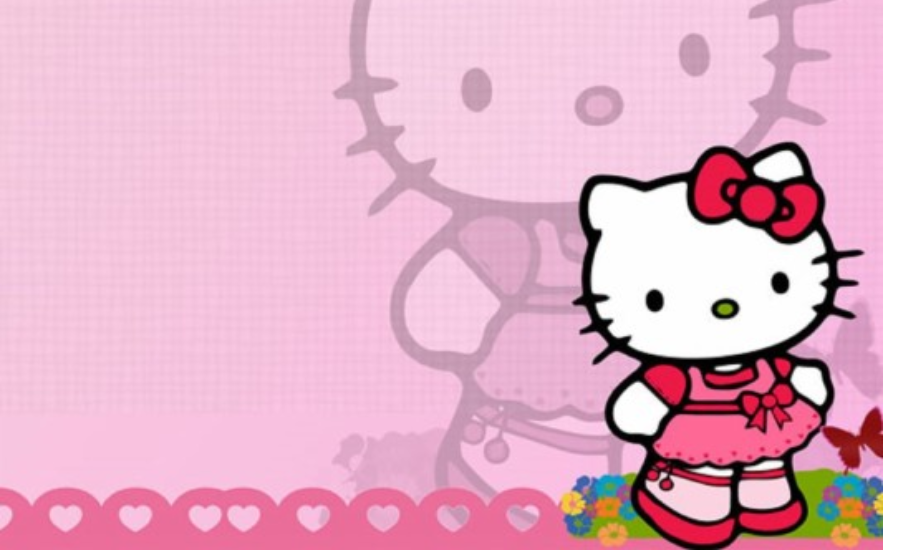Pink:cmxa0qcysjw= hello kitty Hello Kitty, the whimsical character that has captured hearts worldwide, was born out of Japan’s fascination with cuteness (known as “kawaii”) in 1974. Created by the Japanese company Sanrio, Hello Kitty was the brainchild of designer Yuko Shimizu. The character was initially introduced as a vinyl coin purse, but her popularity quickly grew, becoming a global icon. With her simplistic design—a round face, no mouth, and a bow on her ear—Hello Kitty embodies innocence and happiness. Sanrio strategically marketed her as a symbol of friendship and affection, which resonated with audiences across the globe.
Why “Hello Kitty” and Not “Hello Cat”?
One might wonder why the character is called “Hello Kitty” instead of “Hello Cat.” The choice of “Kitty” over “Cat” is not just a linguistic preference; it reflects the character’s role as a friendly, approachable figure. “Kitty” is a diminutive, endearing term that adds to the character’s charm, making her more relatable and less formal than “Cat.” This subtle choice helped Sanrio appeal to a broader audience, making Hello Kitty more than just a cartoon character—it made her a cultural icon.
The Pink Obsession
Pink has been central to Hello Kitty’s branding since its inception. Pink, often associated with femininity, warmth, and playfulness, became synonymous with Hello Kitty’s image. Sanrio understood the psychological impact of color and utilized pink to evoke a sense of comfort and nostalgia. Over the years, this pink aesthetic has become so intertwined with Hello Kitty that it’s hard to imagine her without it. The color reinforces the character’s innocence and broadens her appeal, making her a symbol of cuteness that transcends age and culture.
Pink:cmxa0qcysjw= hello kitty
Pink:cmxa0qcysjw= hello kitty has intrigued Hello Kitty fans for years. While it may appear cryptic, this code represents the brand’s digital identity in an era where online presence is paramount. The code encapsulates Hello Kitty’s pink-themed world, symbolizing her digital footprint in various online platforms. It’s a nod to the character’s ability to adapt and remain relevant in the digital age, blending the traditional with the modern in a way that continues to captivate audiences.
The Design Evolution of Hello Kitty
Pink:cmxa0qcysjw= hello kitty design has undergone subtle changes since her debut, but the core elements remain unchanged. Originally, Hello Kitty was portrayed as a British schoolgirl living in London, reflecting Japan’s fascination with Western culture at the time. Her design was simple, with no mouth, which Sanrio explained was to allow fans to project their own emotions onto her. Over the decades, her design has evolved slightly to keep up with modern trends while maintaining her iconic features. These minor adjustments have kept Hello Kitty relevant, ensuring she remains a beloved figure across generations.
The Pink Palette
Pink:cmxa0qcysjw= hello kitty The pink palette has become an inseparable part of Hello Kitty’s identity. Pink is the dominant color from her bow to the background of her merchandise. This choice is no accident—pink evokes warmth, calm, and affection. For Hello Kitty, pink represents more than just a color; it symbolizes the character’s playful yet comforting nature. This consistent use of pink has helped establish a strong brand identity, making Hello Kitty instantly recognizable in a crowded marketplace.
The Impact of Simplistic Design
Pink:cmxa0qcysjw= hello kitty design is characterized by its simplicity, which is one of the reasons for her widespread appeal. With minimal facial features, Hello Kitty embodies a universal form of expression. Her lack of a mouth has sparked various interpretations, with some believing it allows her to express a range of emotions depending on the viewer’s feelings. This open-ended design has made Hello Kitty a versatile character, appealing to children and adults, regardless of cultural background.
The Global Impact of Hello Kitty
Cultural Adaptation
Pink:cmxa0qcysjw= hello kitty ability to adapt to different cultures has been crucial to her global success. In Japan, she symbolizes Kawaii culture, which represents innocence and cuteness. In the West, she’s often seen as a nostalgic figure, a reminder of childhood. Sanrio has been adept at tailoring Hello Kitty’s image to fit various cultural contexts, whether through localized merchandise or strategic partnerships. This cultural flexibility has allowed Hello Kitty to maintain worldwide relevance, making her a true global icon.
Hello Kitty in the East vs. West
While Hello Kitty is universally loved, her reception varies between the East and the West. In Japan and other parts of Asia, she’s a cultural staple, often associated with everyday items like stationery, apparel, and even household goods. In the West, however, Hello Kitty is more of a fashion statement or a nostalgic symbol, often associated with luxury collaborations and high-end fashion. This difference in perception highlights the character’s versatility, allowing her to resonate with diverse audiences uniquely.
Merchandising Magic
Pink:cmxa0qcysjw= hello kitty Merchandising has been at the heart of Hello Kitty’s success. From the moment she was introduced to a coin purse, Sanrio realized the potential of Pink:cmxa0qcysjw= hello kitty as a merchandising powerhouse. Today, the Hello Kitty brand spans thousands of products, from toys and clothing to home decor and electronics. The character’s image has been licensed to various companies, creating many Hello Kitty-themed products catering to different age groups and demographics. This extensive merchandising strategy has made Hello Kitty one of the highest-grossing media franchises ever.
Read More: Beautiful:by5oj2_qmci= Flowers










